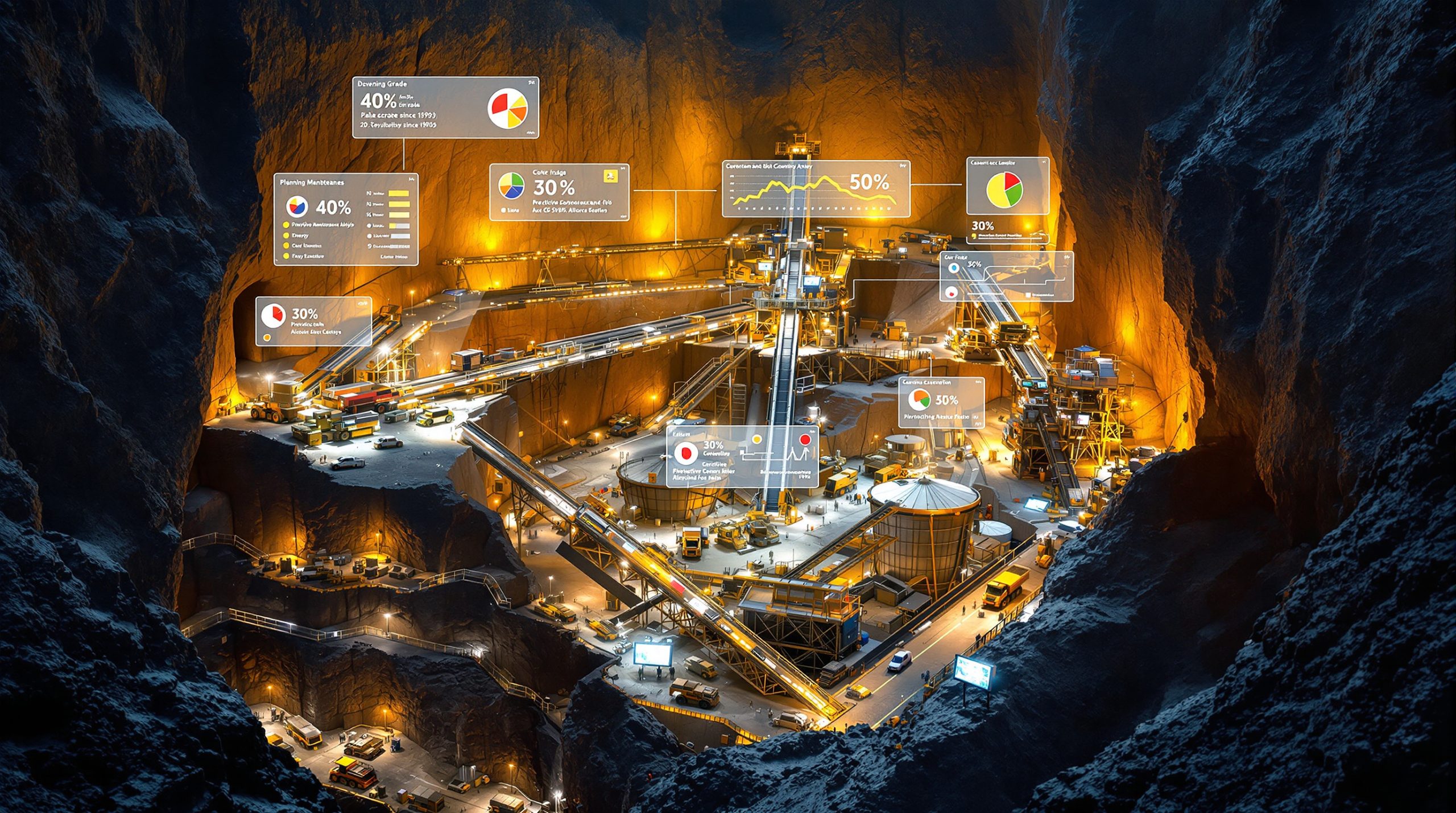Pentagon's Strategic Gambit: The Multi-Billion Dollar Push for US Rare Earth Independence
The Trump administration's Department of Defense has initiated an unprecedented financial commitment to establish domestic rare earth refining capabilities, marking a fundamental shift in America's approach to critical mineral security. This US Department of Defense rare earth refining project, driven by national security imperatives and technological sovereignty concerns, represents one of the most significant industrial policy decisions of the decade. Furthermore, Trump's critical minerals order underscores the administration's commitment to reducing foreign dependency on these crucial materials.
Critical Materials Driving Defense Innovation
Heavy rare earth elements serve as the technological foundation for America's most sophisticated military systems. These materials enable advanced weapons platforms to achieve precision capabilities that define modern warfare superiority, whilst addressing energy security challenges across multiple sectors.
Military System Dependencies:
- Precision-guided missile systems requiring dysprosium-enhanced permanent magnets
- Advanced radar installations utilising terbium-based electronic components
- F-35 Lightning II fighter jets incorporating specialised rare earth alloys
- Naval sonar systems dependent on magnetostrictive rare earth compounds
- Satellite communication arrays utilising high-purity rare earth elements
The Strategic Vulnerability Gap
China's dominance over global rare earth refining creates significant supply chain vulnerabilities for American defence contractors. Current processing concentration reaches approximately 85-90% of worldwide capacity, according to the U.S. Geological Survey's 2024 mineral commodity assessments. In contrast, the European CRM facility initiatives demonstrate alternative approaches to reducing dependency on Chinese processing capabilities.
Heavy rare earth elements represent the most constrained segment of this supply chain, comprising only 1-2% of total rare earth oxide production globally. These materials prove essential for high-temperature permanent magnet applications, where conventional alternatives fail to maintain magnetic properties under extreme operational conditions.
The scarcity of heavy rare earth elements creates a strategic chokepoint that affects everything from precision munitions to electronic warfare systems, making domestic production a critical national security priority.
Defense Department Investment Scale and Structure
Since 2020, the Pentagon has allocated substantial funding through Defense Production Act Title III authorities to establish comprehensive domestic rare earth processing infrastructure. These investments target multiple production stages, from initial separation through final magnet manufacturing, whilst considering the broader implications of US-China trade impacts.
| Investment Category | Funding Allocated | Strategic Focus |
|---|---|---|
| Processing Infrastructure | $300+ million | Separation and refining facilities |
| Magnet Production | $100+ million | Downstream manufacturing capabilities |
| Technology Development | $39+ million | Advanced processing innovations |
| Total Program Value | $439+ million | Complete supply chain integration |
The funding structure emphasises speed-to-market deployment rather than traditional procurement timelines. Defence officials recognise that conventional development cycles cannot address the urgency of current supply chain vulnerabilities.
Commercial Partnership Strategy
Pentagon investments utilise strategic partnerships with private sector companies to accelerate domestic production timelines. These arrangements combine government funding with commercial expertise to achieve rapid scaling of processing capabilities.
Partnership Elements:
- Direct equity participation in critical mineral companies
- Long-term offtake agreements providing market certainty
- Technology development contracts for proprietary processing methods
- Infrastructure funding for commercial-scale facility construction
Leading Companies in Pentagon-Funded Initiatives
Louisiana Heavy Rare Earth Operations
Alexandria, Louisiana hosts a significant Defense Department-funded heavy rare earth separation project that demonstrates commercial-scale processing capabilities. This facility focuses specifically on terbium and dysprosium production, representing the most strategically critical elements for defence applications. Ucore's DoD-funded project exemplifies this type of strategic partnership approach.
Project Specifications:
- Phase 1 Funding: $4 million for demonstration programmes
- Phase 2 Award: $18.4 million for commercial scale-up
- Technology Platform: Proprietary column-based chromatographic separation
- Target Elements: Heavy rare earth elements (terbium, dysprosium)
- Current Status: Commercial-scale equipment design and facility engineering underway
Recent project milestones include successful separation of terbium from dysprosium at demonstration scale, validating the commercial viability of advanced chromatographic processing methods. Site preparation activities in Alexandria include comprehensive geological and environmental assessments supporting facility construction.
Integrated Processing Facility Development
Multiple locations across the United States are receiving Defense Department support for integrated rare earth processing operations. These facilities combine mining, separation, and manufacturing under unified management structures to create resilient supply chains, aligning with broader North American mining trends.
California Operations:
- Mountain Pass mining integration with processing capabilities
- Pacific coast positioning for international supply chain diversification
- Proximity to technology sector customers requiring high-purity materials
Texas Manufacturing Hub:
- Central distribution positioning for national market access
- Abundant energy resources supporting processing operations
- Established manufacturing workforce with chemical processing expertise
Revolutionary Processing Technologies
Advanced Chromatographic Separation
Modern rare earth refining increasingly relies on sophisticated chromatographic systems that achieve unprecedented separation precision. These column-based technologies enable individual element isolation from complex rare earth concentrates.
Technical Advantages:
- Individual rare earth element separation from mixed concentrates
- Reduced processing time compared to conventional solvent extraction
- Modular system architecture enabling scalable production
- Lower environmental impact through reduced chemical consumption
- Enhanced purity levels meeting defence-grade specifications
Commercial-scale chromatographic systems represent a significant technological advancement over traditional solvent extraction methods. These systems achieve higher separation efficiency whilst generating reduced waste streams, addressing both economic and environmental considerations.
Integrated Facility Design
Contemporary rare earth processing facilities incorporate multiple separation stages within unified operations. This integration reduces material handling costs, improves quality control, and accelerates production timelines.
Integration Benefits:
- Reduced transportation costs between processing stages
- Enhanced quality control through unified management
- Accelerated production timelines eliminating intermediate storage
- Improved security for defence-critical materials
Strategic Facility Locations
Gulf Coast Processing Advantage
Louisiana's industrial infrastructure provides significant advantages for rare earth processing operations. The state's established chemical industry, deep-water port access, and skilled workforce create ideal conditions for large-scale industrial development.
Infrastructure Assets:
- Existing chemical processing industry with supporting services
- Mississippi River system providing raw material transportation
- Skilled industrial workforce experienced in complex chemical processes
- Favourable regulatory environment supporting industrial development
Western Integration Opportunities
California facilities benefit from proximity to domestic rare earth mining operations whilst maintaining access to international markets through Pacific trade routes. This positioning enables efficient raw material sourcing and global market participation.
Strategic Positioning:
- Reduced transportation costs from Mountain Pass mining operations
- Access to technology sector customers requiring specialised materials
- Established rare earth industry relationships and expertise
- Port facilities supporting both import and export activities
Global Production Context and Competition
Understanding America's position in global rare earth production requires examining both mining and processing capabilities. Whilst the United States possesses significant rare earth mining capacity, refining capabilities remain limited compared to international competitors. According to recent analysis, Pentagon initiatives aim to build substantial stockpiles to counter Chinese dominance.
| Country | Mining Capacity (2023) | Processing Share | Strategic Focus |
|---|---|---|---|
| China | 240,000 tonnes | 85-90% | Full spectrum dominance |
| United States | 43,000 tonnes | <5% | Domestic capacity building |
| Australia | 18,000 tonnes | Minimal | Export-focused mining |
| Myanmar | 13,000 tonnes | Limited | Raw material export |
Domestic Capacity Development Targets
Pentagon investments aim to establish significant domestic processing capabilities by 2027. These targets represent ambitious scaling from current minimal capacity to strategic self-sufficiency levels, particularly for the US Department of Defense rare earth refining project initiatives.
Capacity Development Milestones:
- 2025: Initial commercial production from funded facilities
- 2026: Scaled operations achieving 50% of target capacity
- 2027: Full operational capacity meeting strategic objectives
- 2028+: Potential expansion based on defence and commercial demand
Success metrics include production volumes, quality specifications, and cost competitiveness with international suppliers. These targets require coordinated execution across multiple facilities and technology platforms.
Economic Development and Industrial Impact
Employment Generation
Rare earth processing facilities create substantial employment opportunities across multiple skill levels. These operations require specialised technical expertise whilst generating broader economic benefits through supply chain development.
Employment Categories:
- Chemical engineers specialising in separation processes
- Process technicians managing complex production systems
- Quality control specialists ensuring defence-grade specifications
- Maintenance personnel supporting continuous operations
- Administrative and logistics staff managing facility operations
Industry analyses suggest each major processing facility generates 200-500 direct employment positions with average compensation levels exceeding $75,000 annually for technical roles. Indirect employment through supply chain development multiplies these impacts substantially.
Supply Chain Resilience Benefits
Domestic rare earth processing reduces vulnerability to international supply disruptions whilst creating strategic flexibility for defence procurement. This resilience extends beyond military applications to civilian technology sectors requiring these materials.
Resilience Advantages:
- Reduced exposure to geopolitical supply disruptions
- Price stability through domestic production capacity
- Enhanced technology development capabilities
- Strengthened defence industrial base
Implementation Challenges and Strategic Considerations
Technical Complexity and Expertise Development
Rare earth separation requires sophisticated chemical processes and specialised technical knowledge. Developing domestic expertise involves significant learning curves and substantial capital investment requirements.
Technical Requirements:
- Complex multi-stage chemical separation processes
- Environmental compliance with hazardous material handling
- Quality control systems ensuring defence-grade specifications
- Skilled workforce development for specialised operations
Market Competition and Economic Viability
Chinese rare earth producers benefit from decades of operational experience and established customer relationships. American facilities must achieve competitive economics whilst meeting higher environmental and safety standards.
Competitive Challenges:
- Lower-cost international production with established supply chains
- Market price volatility affecting investment returns
- Customer relationship development in established markets
- Technology transfer and intellectual property considerations
Regulatory and Environmental Compliance
Rare earth processing involves hazardous chemicals and generates waste streams requiring careful environmental management. Regulatory compliance adds complexity and operational costs to domestic facilities.
Regulatory Considerations:
- Environmental impact assessments for facility development
- Hazardous waste management and disposal requirements
- Air quality standards for chemical processing operations
- Community engagement and stakeholder consultation processes
Defense Capability Enhancement Through Secure Supply Chains
Advanced Weapons System Performance
Reliable domestic rare earth access enables consistent performance optimisation for precision weapons systems. This material security supports development of next-generation military technologies requiring specialised rare earth compounds.
Performance Applications:
- Enhanced accuracy for precision-guided munitions through superior permanent magnets
- Improved electronic warfare capabilities utilising specialised rare earth components
- Advanced sensor systems with enhanced sensitivity and durability
- Next-generation propulsion technologies requiring high-temperature materials
Technology Development Independence
Secure rare earth supplies enable American defence contractors to pursue advanced technology development without supply chain constraints. This independence accelerates innovation cycles and reduces technological development risks.
Innovation Enablers:
- Unrestricted access to experimental quantities of specialised materials
- Accelerated prototype development and testing cycles
- Enhanced technology transfer between defence and civilian applications
- Reduced foreign dependency risks in critical technology development
Strategic Success Metrics for 2027
Production Capacity and Quality Standards
The Pentagon's mine-to-magnet initiative establishes ambitious targets for domestic supply chain capabilities. Success requires achieving production volumes, quality specifications, and cost competitiveness within defined timelines for the US Department of Defense rare earth refining project.
Success Indicators:
- 25,000+ tonnes annual domestic processing capacity
- 99%+ purity levels for defence-grade applications
- Cost competitiveness with international suppliers
- Complete supply chain integration from mining through magnet production
Strategic Independence Achievement
Successful implementation creates resilient rare earth supply chains supporting both defence and civilian technology applications. This achievement reduces strategic vulnerabilities whilst enabling continued technological advancement.
Strategic Outcomes:
- Elimination of single-source supply dependencies for critical defence applications
- Enhanced domestic industrial base capabilities supporting multiple sectors
- Improved competitive positioning in global technology markets
- Strengthened national security through materials independence
Long-term Industrial Development
Pentagon investments establish foundations for sustained rare earth industry growth extending beyond initial defence requirements. These capabilities support future expansion as demand increases across multiple technology sectors.
Development Framework:
- Scalable processing technologies enabling capacity expansion
- Workforce development programmes supporting industry growth
- Research and development platforms advancing processing innovations
- International partnership opportunities based on domestic capabilities
The Department of Defense's multi-billion-dollar commitment to domestic rare earth refining represents a transformative approach to critical mineral security. Through strategic partnerships, advanced technologies, and substantial financial investment, the US Department of Defense rare earth refining project initiatives are establishing industrial capabilities essential for both national security and technological leadership.
Success in this endeavour extends beyond defence applications, creating economic opportunities whilst reducing strategic vulnerabilities inherent in foreign supply dependencies. The next three years will determine whether these ambitious objectives translate into operational reality, fundamentally reshaping America's position in global rare earth markets.
Disclaimer: This analysis is based on publicly available information as of October 2025. Defence procurement details, specific funding allocations, and strategic timelines may be subject to classification restrictions or policy modifications. Investment decisions should be based on comprehensive due diligence and professional financial advice.
Looking to Capitalise on Critical Minerals Investment Opportunities?
Discovery Alert's proprietary Discovery IQ model delivers real-time alerts on significant critical minerals discoveries across the ASX, instantly empowering subscribers to identify actionable opportunities ahead of the broader market. Begin your 30-day free trial today and secure your market-leading advantage in this rapidly evolving sector.




